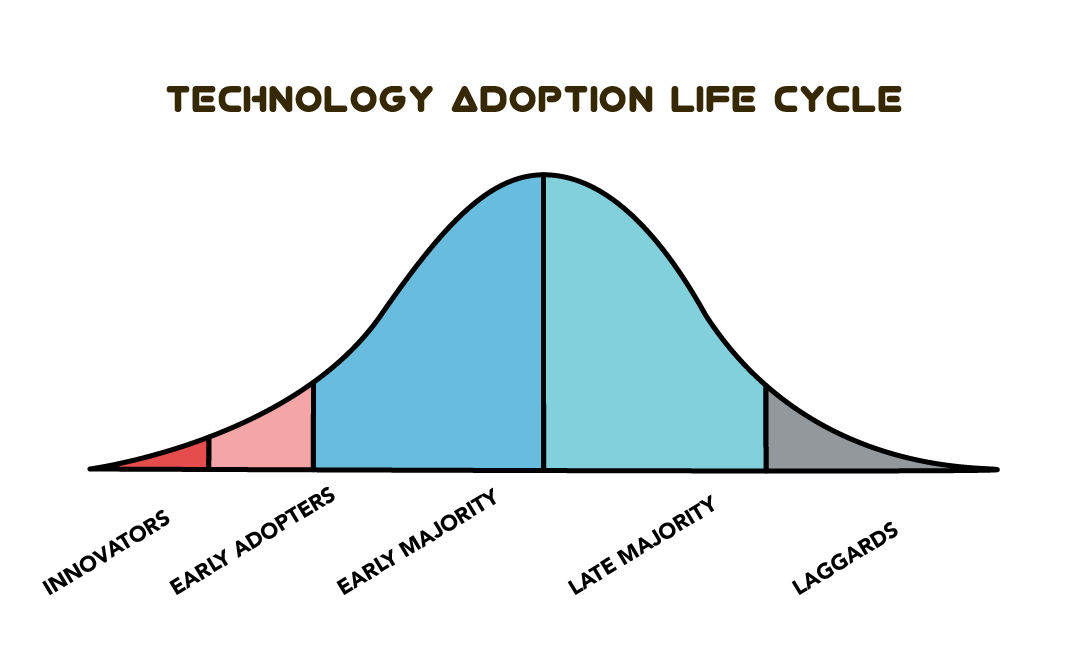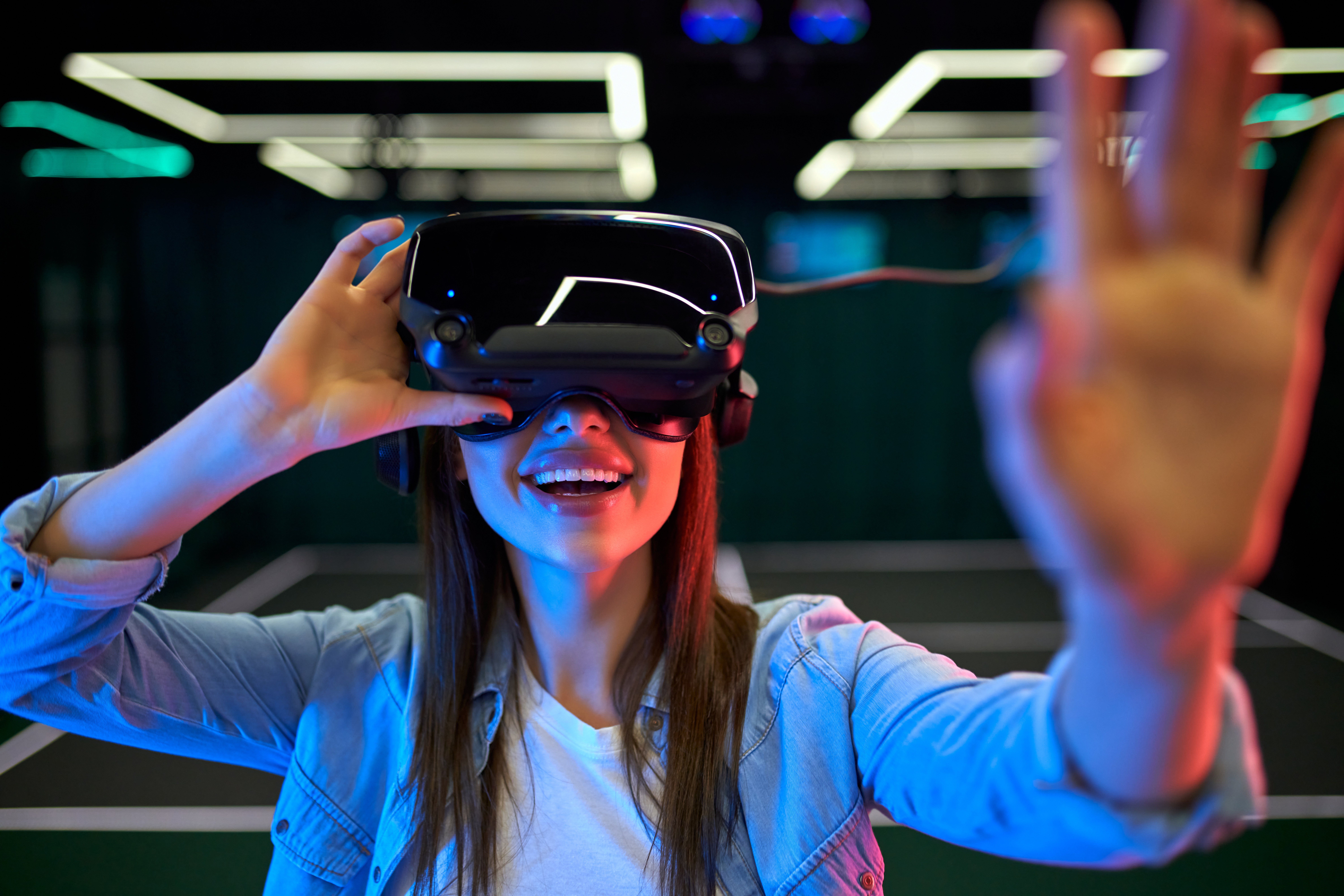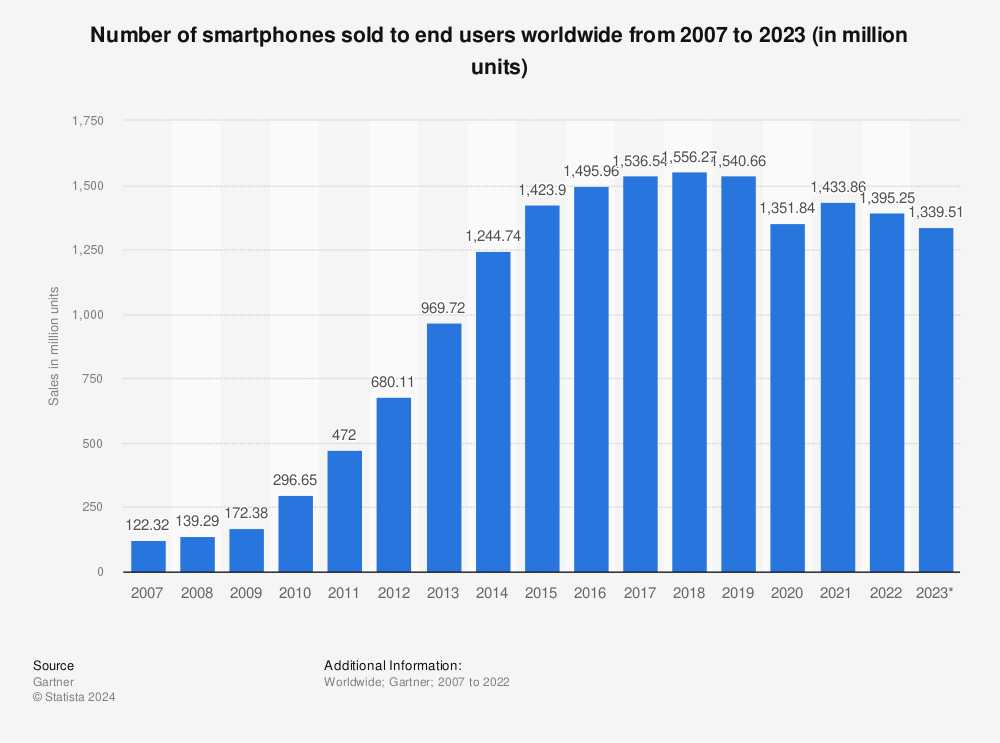Commercial VR in the Technology Adoption Life Cycle
Posted on: 2021-10-22
When it comes to new technology like virtual reality, there’s a fairly predictable adoption life cycle that describes who buys in and when as it becomes successful.

You’ve got the early market, which features two groups: Innovators and Early Adopters. You then have the bulk of the population coming as the Early Majority and Late Majority. Finally, you’ve got the tail Laggards.
Let’s illustrate that with something that’s likely a part of all our lives by now: the smartphone. The first device that most would recognize as a smartphone is the original iPhone.
- Full internet experience
- Large, intuitive, full-color touchscreen
- Apps, apps for everything!
Before the iPhone, while many people would have some kind of internet on their phone, anyone who’d have spent the money on anything coming close to the features of the iPhone would have been in that innovator category — it’s easy to forget how uncommon it or its early competitors were in those first few years.
Then, the Early Adopters bought in — they’re quick to be a part of technology trends that are taking off. But it’s not until 2010 that you really see the market growing fast. Between 2010 and around 2016, you see the huge growth expand and begin to plateau as the early and late majority come aboard. A few generations in, the technology has proven itself — and more and more becomes an integral part of day-to-day life. The smartphone is something they need to keep up with society in general, so they’re in.
At this point, you have a certain amount of business as existing users continue to pay to upgrade their device every few years, but the only customers buying in for the first time are the Laggards. They’re only going to come on board if absolutely necessary. (And that dip in 2020 of course, has other factors involved than the life cycle!)
Where Are We With VR?
With VR, we’re still in the Early Adopters phase. Considering the modern VR market to have began with the Oculus Rift, the technology has matured and settled a little — but is not yet a part of day-to-day life for most people.
Similar to the first few successive generations of smartphones, initial bugs, inconveniences, and rough edges have been polished, and the tech feels a little more consumer-friendly.
Beyond the high-end PC-powered headsets like HTC Vive, the Oculus Quest in particular has brought people a streamlined, affordable, stand-alone VR opportunity, and PSVR made it available to anyone bought into the Sony console ecosystem — but we’re still looking at Early Adopters. Today's VR owners believe in the technology because it appeals to them on a personal level and they’re willing to take a little leap of faith with their money, rather than those in the coming Early Majority phase who will buy in when they see the technology as becoming a standard that they need to be a part of.
Virtual reality has also seen some inroads in business settings. It can be used for safety training, or more immersive remote meetings. There are also social and creative applications as well. And Facebook, via Oculus, has been devoting significant resources toward their VR Metaverse concept that would see enormous numbers of adopters.
At some point, a VR headset could very well be a social and business necessity just like a smartphone is now, but wasn't in 2008 or '09. But not quite yet. People are interested in virtual reality. They just aren’t necessarily convinced they’re going to buy a headset right now. What they might do instead? They could put a lower cost one-off experience in their entertainment rotation.
Who Plays Commercial VR? Learn more in this post...

Commercial VR’s Role In The Technology Adoption Life Cycle
There’s a business opportunity here for location-based entertainment. While there are strong signals that commercial VR done right has long-term staying power as well, the approach to that inflection point in VR headset ownership could be quite the exciting time for entertainment businesses that operate a VR service of their own.
Even as we get into that Early Majority stage of the cycle, many people will still be a little wary of the technology. They’ll be looking for a low risk way of seeing how they feel about VR, and an entertainment business offering an hour of play for a low fee will be just the thing they need.
- It's a low-risk investment in terms of money and time
- They're not committing to the hardware
- You're offering something better than a home experience as their introduction
The key thing here is you’re not just a showroom they’ll visit once. Even when the VR market fully matures and we’re just left with Laggards, home VR will always be limited by the space people have available at home. And the vast majority of owners are just not going to clear an entire room or drop thousands of dollars on a fancy 360 treadmill no matter how big VR gets.
In other words, show someone a great time in VR and they’re not just going to buy a headset and never come back — the same way a laser tag customer won’t just play once and then fulfil their needs with a home laser tag kit. They’ll be back, because you’ve got a different quality of experience.
So take advantage of this stage of the technology adoption cycle. Get set up with a VR product, be that gateway to VR — and be the reliable go-to spot for high quality VR whenever your customers feel the itch.
Want to know more? We discuss VR in the technology adoption life cycle in more detail in our recent webinar: Who Plays VR?. The recording is available free: check it out!



